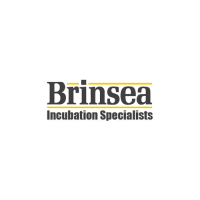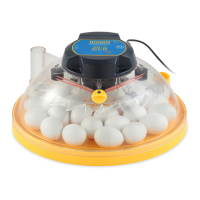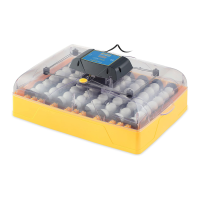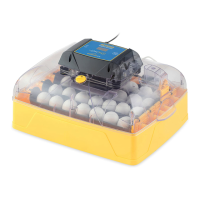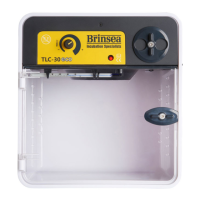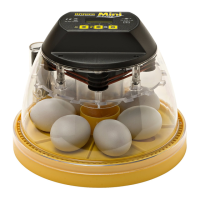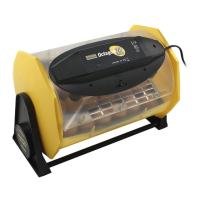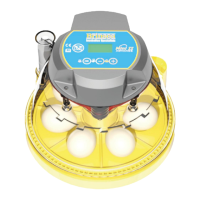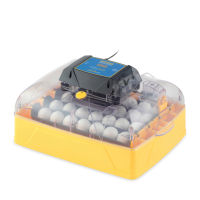A015 GB Issue 05
1
Mini Eco high performance egg incubator
User instructions
Contents
Section Subject Page
1 Introduction 2
2 Unpacking 3
3 Location and Installation 3
4 Storage of eggs 4
5 Temperature 4
6 Humidity and Ventilation 5
7 Egg setting 5
8 Egg turning 6
9 Hatching 6
10 Cleaning up 6
11 Servicing 7
12 Troubleshooting 7
13 Specification 8
Read the instructions before use!
Damaged appliances shall not be used.
The appliance and its supply cord must be placed in an indoor area not subject to splashes
of water or wet conditions and protected from or out of reach of animals.
Repairs shall be carried out only by a suitably qualified person.
This appliance shall not be used, cleaned or maintained by children or persons with reduced
physical, sensory or mental capabilities or lack of experience and knowledge without
supervision. Children shall not play with the appliance.
Disconnect the incubator from the mains power supply during cleaning. Ensure that all
electrical parts are kept dry.
This appliance is only to be used with the power supply unit provided with the appliance.
Record your appliance serial number here: __________________
